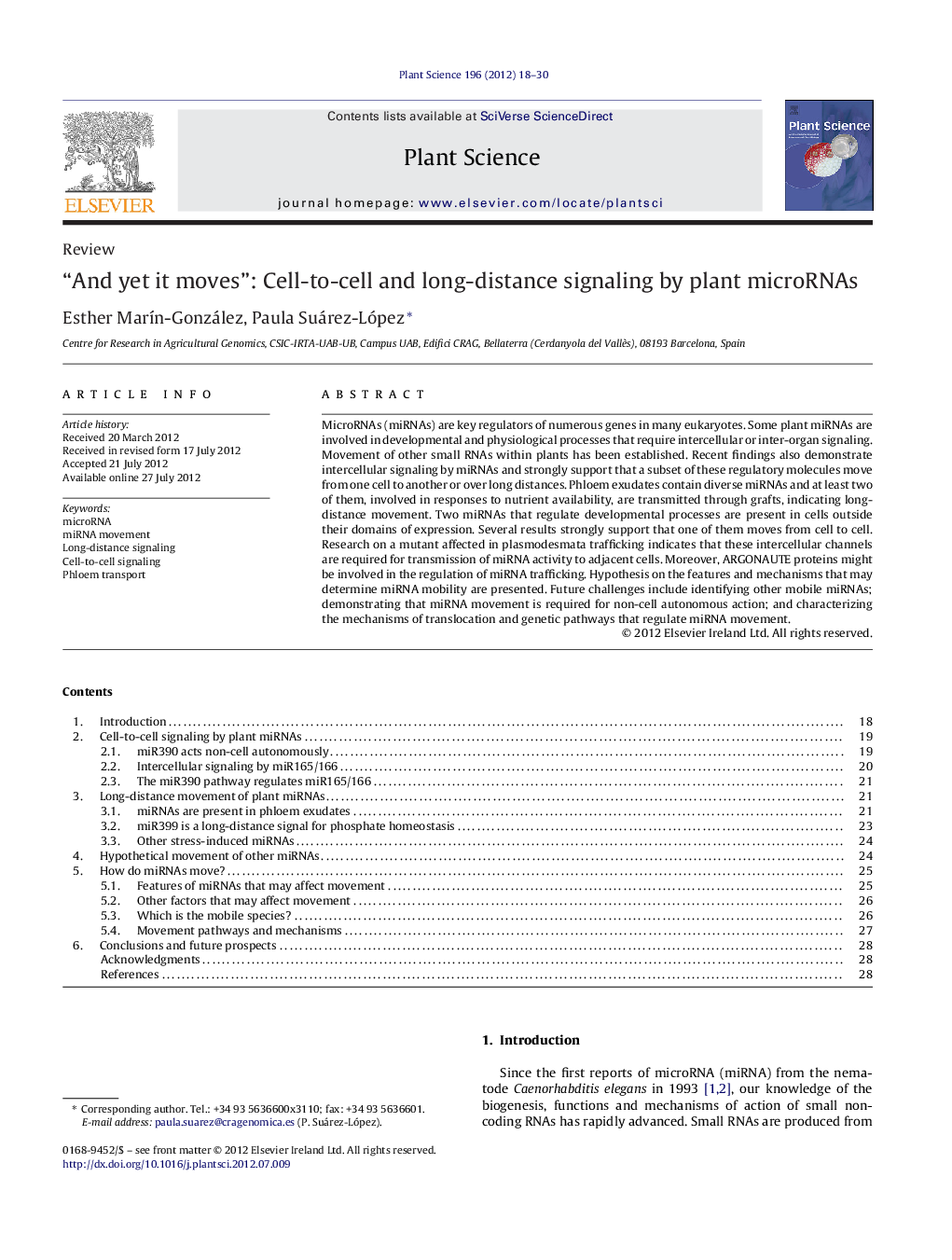| Article ID | Journal | Published Year | Pages | File Type |
|---|---|---|---|---|
| 2017304 | Plant Science | 2012 | 13 Pages |
MicroRNAs (miRNAs) are key regulators of numerous genes in many eukaryotes. Some plant miRNAs are involved in developmental and physiological processes that require intercellular or inter-organ signaling. Movement of other small RNAs within plants has been established. Recent findings also demonstrate intercellular signaling by miRNAs and strongly support that a subset of these regulatory molecules move from one cell to another or over long distances. Phloem exudates contain diverse miRNAs and at least two of them, involved in responses to nutrient availability, are transmitted through grafts, indicating long-distance movement. Two miRNAs that regulate developmental processes are present in cells outside their domains of expression. Several results strongly support that one of them moves from cell to cell. Research on a mutant affected in plasmodesmata trafficking indicates that these intercellular channels are required for transmission of miRNA activity to adjacent cells. Moreover, ARGONAUTE proteins might be involved in the regulation of miRNA trafficking. Hypothesis on the features and mechanisms that may determine miRNA mobility are presented. Future challenges include identifying other mobile miRNAs; demonstrating that miRNA movement is required for non-cell autonomous action; and characterizing the mechanisms of translocation and genetic pathways that regulate miRNA movement.
► Some miRNAs can move from cell to cell. ► miRNAs are present in phloem sap. ► Phloem sap miRNAs can be transmitted through grafts. ► Plasmodesmata are required for cell-to-cell movement of miRNAs.
